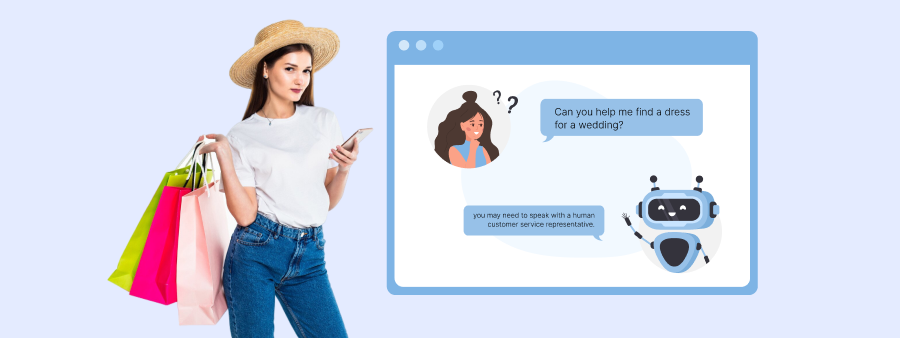
Retail Chatbot Solutions: Case Studies of Successful Implementations
For the retail space, it is high time that they shift towards, AI-driven automation as customers are embracing the future at the speed of light. Perhaps one of the most significant innovations of the last few years is gaining momentum — Retail Chatbot Solutions. These are AI-enabled assistants that help automate time-consuming tasks, provide real-time customer support, and personalize shopping experiences. These smart chatbots are changing the way businesses communicate with their customers, resulting in increased customer engagement, better sales figures, and higher customer satisfaction rates.
This blog delves into through real world case studies on how few top retail brands have successfully implemented chatbots to increase efficiency, improve revenues and bring about seamless shopping experiences.
The Growing Need for Chatbots in Retail
As the landscape moves to digital stores, consumers want their queries to be resolved immediately and in an efficient fashion. As a result, these enhanced expectations are exceedingly challenging to meet using traditional customer service processes that rely extensively on human support and have led to delay, inefficiency, and disappointing customer experiences.
These challenges are solved by AI powered chatbots –
- 24/7 Automated customer support provision
- You can improve discovery of product with personalized recommendation
- Helping customers track their orders and processing returns
- Engaging and conversational commerce to drive sales
Top global retailers are also using Retail Chatbot Solutions to improve the shopping experience, boost operational efficiency and conversion rates. The following case studies highlight real-world examples of AI-powered chatbots in action within the retail space.
Sephora: AI-Powered Beauty Consultation
One of the biggest beauty retailers across the globe, Sephora introduced a conversational AI chatbot to deliver personalized beauty assistance. Customers interact with the chatbot get the recommendations for the skincare and make-up which is suited to their needs.
How it Works:
- Users post selfies, and the bot analyses skin tone and facial features to recommend appropriate products.
- Step-by-step makeup tutorials and beauty tips for customers
- Integrated with social media like Facebook Messenger for shopping on the go via chat.
Results:
- 11% boost in conversion via personalized recommendations
- More customer Interaction and better brand loyalty.
- Less dependence on in-store beauty advisors making operations efficient.
Sephora chatbot is an example of how AI can transform customer experiences by providing hyper-personalized assistance in the retail industry.
H&M: AI Stylist for Personalized Fashion Shopping
H&M, a global fashion retailer, introduced a virtual shopping assistant chatbot to help customers find outfit recommendations and style inspirations.
How it Works:
- The chatbot engages in conversations to understand the customer’s fashion preferences and style.
- It curates outfit suggestions based on trending styles and past purchases.
- Customers can browse, mix, and match outfits within the chatbot and make purchases instantly.
Results:
- 15% increase in sales attributed to AI-powered personalization.
- Enhanced customer experience with tailored fashion advice.
- Improved customer retention rates through interactive engagement.
By utilizing chatbot-driven recommendations, H&M successfully created a digital personal stylist that enhances shopping experiences and boosts revenue.
Walmart: Automating Customer Support at Scale
Walmart, one of the largest retail chains, deployed Retail Chatbot Solutions to streamline customer service. The chatbot assists with order tracking, product availability, refunds, and store information, reducing human dependency in customer support.
How it Works:
- Customers inquire about order status, shipping details, and return policies via the chatbot.
- AI-driven automation helps address frequently asked questions, reducing customer wait times.
- The chatbot integrates with Walmart’s mobile app and website, ensuring omnichannel support.
Results:
- 60% faster resolution of customer queries.
- Reduced workload for human support agents, allowing them to handle complex issues.
- Enhanced customer satisfaction, leading to higher retention rates.
This case highlights how AI chatbots improve operational efficiency by handling high volumes of customer inquiries with minimal human intervention.
Nike: AI-Powered Conversational Commerce
Nike embraced AI-driven chatbot technology to create an interactive shopping experience. Their chatbot offers customized product recommendations, sneaker drops, and personalized styling advice.
How it Works:
- Customers receive early access to limited-edition sneakers by interacting with the chatbot.
- AI-powered algorithms analyze purchase history and preferences to suggest the best shoe options.
- The chatbot integrates with social media platforms and messaging apps to engage users directly.
Results:
- 25% increase in mobile sales through chatbot-driven campaigns.
- Higher customer engagement and interaction with the brand.
- Enhanced brand loyalty among sneaker enthusiasts.
Nike’s approach demonstrates how chatbots can boost e-commerce engagement and drive sales through personalized interactions.
Starbucks: AI-Powered Order and Payment System
Starbucks introduced an AI-powered chatbot within its mobile app to simplify the ordering process. The chatbot allows users to place orders, customize beverages, and check loyalty rewards using natural conversations.
How it Works:
- Customers interact with the chatbot to place orders and modify drink preferences.
- Real-time order updates and estimated wait times are provided.
- The chatbot integrates with Starbucks Rewards, allowing customers to earn and redeem points.
Results:
- Increased mobile app engagement, leading to a 20% rise in digital sales.
- Faster and more convenient order placements for customers.
- Improved customer experience, enhancing Starbucks' digital transformation efforts.
By integrating chatbots with ordering and payment systems, Starbucks has enhanced customer convenience and operational efficiency.
The Future of AI Chatbots in Retail
The success stories of Sephora, H&M, Walmart, Nike, and Starbucks highlight the immense potential of Retail Chatbot Solutions. Businesses investing in AI-driven chatbots benefit from personalized customer engagement, streamlined operations, and increased sales. As chatbot technology continues to evolve, future innovations will focus on:
- Voice-enabled AI assistants for hands-free shopping experiences.
- AI-driven predictive analytics to anticipate customer needs.
- Advanced integrations with augmented reality (AR) for virtual try-ons.
Retailers that embrace conversational AI will gain a competitive advantage, offering seamless and engaging shopping experiences that drive higher customer satisfaction and brand loyalty.